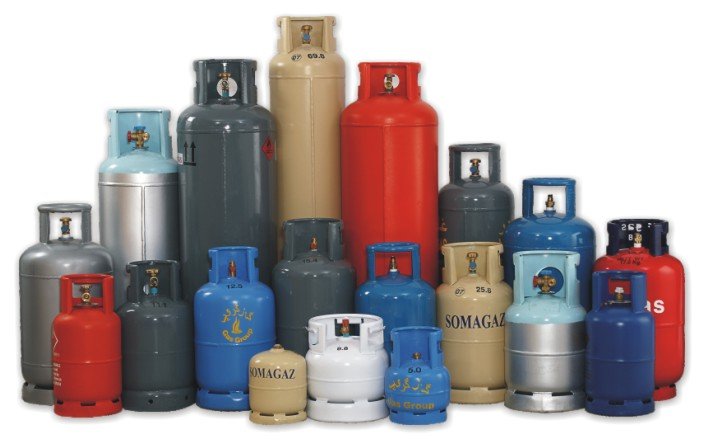Economy
Consumers lament bleak Xmas over rising food, gas prices

By ADEBAYO OBAJEMU
High cost of living is beginning to take a heavy toll on average Nigerians. This is compounded by soaring prices of foodstuffs and liquefied petroleum gas. This development appears to be getting worse as we approach the yuletide season.
Already, many housewives are crying out, even as many bread winners are afraid that the high cost of living may threaten their desire to enjoy Christmas, meet family obligations and make their children happy.
Owing to soaring price of cooking gas now at N10,000 per 12.5 kg, many households who are on shoestrings are already learning the wisdom dictated by necessity, shifting to dirty fuels such as sawdust and charcoal.
From August, the price of cooking gas has continued to soar. The price of LPG in the Federal Capital Territory (FCT) increased from an average of N4,800 for a 12.5kg cylinder in June to about N7500-N8000 in October and this still subsists according to reports.
In Lagos, as from mid-October the price ranged between N6,400 and N7,200 respectively, while as at June, the price was far below N5,000 . Going by what gas marketers are saying, the 12.5kg of gas is likely to cost N10,000 before the yuletide.
Juliet Adesanya, a house wife in Agege told BusinessHallmark that owing to the rising price of gas she had bought a charcoal stove with which she prepares food that consumes more gas such as beans.
“Look, I don’t bother to cook time- consuming food like beans with gas anymore. I bought a charcoal stove and I use it to cook food that takes time to cook”, she told this medium.
She said three of her friends have followed in her footsteps by acquiring charcoal stove.
A caterer Debbie Anthony said she had resorted to the use of charcoal for her cooking, admitting that most of her customers would not be able to pay beyond N300 per plate of food if she decided to raise the price.
“As far as I’m concerned, charcoal is cheaper and going by the way things are in this country I have no choice. The only thing is that it is tasking. I have to wake up very early to cook because charcoal takes time to get the food done.
President of the National Association of Liquified Petroleum Gas Marketers (NALPGAM) Bassey Essien, in a recent symposium, admitted that more Nigerians were gradually resorting to coal, sawdust, kerosene, and other dirty fuels, a situation he said had severe and environmental implications.
Some analysts who spoke on the reasons for this unwholesome development blamed it on devaluation of naira, which they say has left a negative impact on the price of LPG as a large quantity of cooking gas used in Nigeria is imported, despite the country being a gas-endowed state.
Dr. Olufemi Omoyele director of Entrepreneurship at Redeemers University told BusinessHallmark that there is a global dimension to what we are currently experiencing, adding that the global gas crisis caused by shortage in supply of natural gas is also a contributing factor to the price surge of LPG in Nigeria, analysts say.
Marketing Manager of the Nigerian Liquid Natural Gas (NLNG) Austin Ogbogbo, during a press briefing in Lagos last month, had also attributed the rising cost of LPG in Nigeria to the inability of domestic marketers to procure a large per cent of gas supplied.
Ogbogo said the decline in procurement was due to challenges with logistics and infrastructure in the industry.
Some stakeholders however see another reason as more pungent, as they have identified the imposition of Value Added Tax (VAT) by the Federal Government (FG) on gas imported into the country.
The imposition of VAT on imported gas by the FG goes contrary to government’s plan to increase the use of gas in the country.
Bassey Essien stated that if the government did not address the recently introduced import charges and VAT, the price of cooking gas might as well hit N10,000 for a 12.5kg cylinder, soon.
Recall that in March 2021 Nigerian President Muhammadu Buhari had declared 2021-2030 as the decade of gas.
It could be recalled that Yemi Osinbajo, Nigeria’s Vice-President, had recently said the Federal Government had intention to increase the number of people using LPG from five per cent to 90 per cent by the end of the decade.
Osinbajo noted that about 900,000 people were negatively affected annually as a result of cooking with dirtier fuels, and said measures were being put in place by the FG to ensure affordability of gas, including providing five to ten million gas cylinders next year.
As if the gas challenge is not enough for Nigerians, they have had to grapple with high prices of foodstuffs.
In a space of two weeks, the price of rice, onions, yam, cooking gas, and pasta increased in November when compared to the previous month as traders across markets in Lagos State visited by BusinessHallmark showed anger and frustration over low patronage despite the fact that the yuletide season just around the corner.
When BusinessHallmark visited some markets across Lagos metropolis, there was slight increase in prices of foodstuffs when compared to the month of October.
According to our findings, the price of a 10kg bag of Mama Gold rice increased by 3.28% to sell for an average of N6,300 compared to N6,100 recorded in the previous month, while the price of a big bag of dry onions increased by 2.31% to sell for an average of N59,000.
But explanation for this surge in price is not in short supply. According to Dr. Olufemi Omoyele, the recent increase in the price of food items has been linked to seasonal ups and downs, in addition to limited supply in the market, which is overwhelmed by customer demand.
However, traders have also complained about the decline in sales turnover, attributing it to the dwindling purchasing power of average Nigerians.
Just as the price of major food items like onions, yam, and pasta soared marginally, some other food items such as garri, beans recorded price decline compared to the previous month.
At places like Mushin, Mile 12, Ile Epo, Mile 2 and Pelewura market, price of a big bag of Ijebu garri declined by 10% to sell for an average of N13,500 compared to N15,000 recorded in the previous month.
It could be recalled that it was sold for N25,000 earlier in the year. Also, a bag of yellow garri that was initially sold for an average of N14,800 now sells for N13,600, representing an 8.15% decrease in price.
What NBS data is saying?
Nigeria’s inflation rate for the month of October 2021, trickled down to 15.99% from 16.63% recorded in the previous month, driven by the decline in the two components of the index. The core inflation dropped to 13.24% compared to 13.74% recorded in September, while food inflation moved downwards to 18.34% as opposed to 19.57% in the previous month.
As the global economy recovers from the coronavirus, but now faced with a new spectre of possible disruptions caused by Omicron variant of Covid -19 pandemic, Nigeria appears to be one of the hardest hit countries in terms of soaring prices of foodstuffs.
Africa’s most populous nation with 210 million inhabitants, Nigeria competes with India for the largest number of poor in the world.
But battered by the double economic impact of low global oil prices and the pandemic,, the World Bank estimates Nigeria’s soaring inflation and food prices pushed another seven million people into poverty in 2020.
Food prices are said to have increased more than 22 percent since the start of the coronavirus crisis, according to official statistics. For many people feeding the family has become a daily challenge.
Even before the pandemic and the surge in food costs, Nigeria’s nutrition figures were alarming: One in three Nigerian children suffered stunted growth due to bad diet; one in 10 is wasted.
As a result, close to 17 million children in Nigeria are undernourished, giving the country the highest level of malnutrition in Africa and second highest in the world.
As the yuletide inches closer, many Nigerians can only see the spectre of hunger becoming more real.



